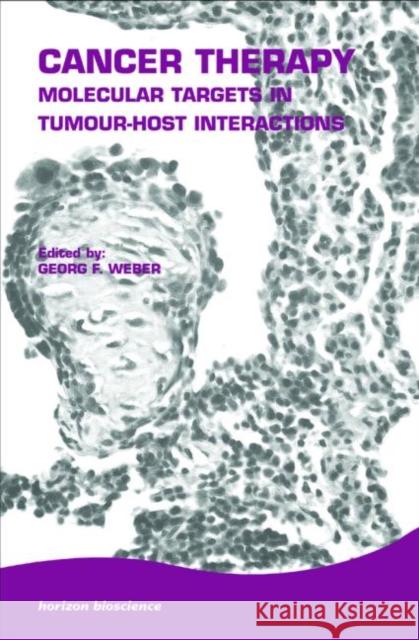Cancer Therapy: Molecular Targets in Tumor-Host Interactions » książka
Cancer Therapy: Molecular Targets in Tumor-Host Interactions
ISBN-13: 9781904933113 / Angielski / Twarda / 2005 / 550 str.
Tumor-host interaction is critical for cancer proliferation and spread. Tumor mass, metastasis, invasion of host tissue, evasion of the host immune response, and tumor drug resistance are all affected by the interaction between the tumor cell and the host. Molecular strategies to interrupt the tumor-host interaction are among the most promising new leads to emerge in cancer pharmacogenomics and oncogenomics in recent years.
This book critically reviews every aspect of this major topic in cancer research. In the opening chapter, Liang and colleagues describe the use of differential display to identify novel cancer-associated genes. This is followed by a chapter in which Aronow et al. describe possibilities for personalized cancer therapies including the potential new therapies identified by pharmacogenomics. Chapter 3 focuses on novel retinoid derived anti-cancer agents. The following chapters review in detail current advances in the targeting of specific events in cancinogenesis including: apoptosis (chapter 4), metastasis (chapters 6, 13), angiogenesis (chapters 7, 8, 10, 11), TGFb (chapter 5), the endothelin receptor (chapter 9), and drug resistance (chapter 15). This section is followed by two excellent chapters detailing strategies that enlist the assistance of the host immune system (chapters 12 and 14). The closing chapter provides a stimulating insight into current research with suicide gene therapy vectors.
Tumour-host interaction is critical for cancer proliferation and spread. Tumour mass, metastasis, invasion of host tissue, evasion of the host immune response, and tumour drug resistance are all affected by the interaction between the tumour cell and the host. Molecular strategies to interrupt the tumour-host interaction are among the most promising new leads to emerge in cancer pharmacogenomics and oncogenomics in recent years.
This book critically reviews every aspect of this major topic in cancer research. In the opening chapter, Liang and colleagues describe the use of differential display to identify novel cancer-associated genes. This is followed by a chapter in which Aronow et al. describe possibilities for personalized cancer therapies including the potential new therapies identified by pharmacogenomics. Chapter 3 focuses on novel retinoid derived anti-cancer agents. The following chapters review in detail current advances in the targeting of specific events in cancinogenesis including: apoptosis (chapter 4), metastasis (chapters 6, 13), angiogenesis (chapters 7, 8, 10, 11), TGFb (chapter 5), the endothelin receptor (chapter 9), and drug resistance (chapter 15). This section is followed by two excellent chapters detailing strategies that enlist the assistance of the host immune system (chapters 12 and 14). The closing chapter provides a stimulating insight into current research with suicide gene therapy vectors.











